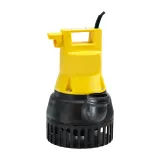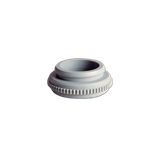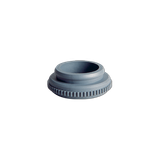Jung Heating, Cooling & Ventilation (HVAC)







Jung Ventilation Control Modules for Airflow Systems
Within HVAC installations, Jung ventilation control modules give contractors reliable control over fans and air-handling units without complicated programming. Each module combines start–stop logic, timing relays, and protection monitoring in one DIN-rail body. Engineers often use them to regulate extract and supply fans in corridors, garages, and technical rooms. The boards are rated IP 54–IP 65 depending on enclosure type, with 24 V DC signal control and 230 V AC switching capacity up to 16 A. Terminal spacing and labeling follow Jung’s standard layout, so wiring remains consistent across entire projects.
A typical setup in commercial buildings uses Jung modules for twin-fan ventilation systems — automatic start of the secondary motor when the main one stops, keeping pressure balance in duct networks. In maintenance zones, technicians appreciate the removable front terminals and mechanical test switch that allow quick service without powering down the whole HVAC line.
Jung Pump Control Units for Circulation and Drainage
For water circuits, Jung pump control units manage everything from compact submersible pumps (U3 KS, U5 K) to pressure-boost systems. The devices integrate dry-run sensors, float-switch input, and thermal cut-out relay — critical in boiler rooms or wastewater pits. Voltage support covers both 230 V single-phase and 400 V 3-phase motors. The electronics continuously monitor load curves to prevent cavitation and overheating.
Procurement teams often select these Jung units because they remain backward-compatible with older pump panels: same 35 mm DIN profile, identical screw terminals, and spare-part continuity. For installers, it means minimal re-wiring when upgrading legacy setups in hotels, schools, or district-heating substations.
Jung Gate Automation Control and Motor Control Devices
Jung gate automation control modules form the interface between the drive motor and the logic circuit — handling torque, travel limit, and safety-edge feedback. These controllers are common in car-parks, logistics warehouses, and perimeter gates where duty cycles are heavy. Built-in delay timers allow soft start/stop movement, extending the mechanical life of the barrier.
Jung motor control devices also appear in rolling-shutter systems or façade vents, where precision positioning is essential. Each unit allows adjustable end-stops, interlock wiring for manual override, and BUS communication with building automation networks. Engineers value the mechanical robustness and EMC shielding that prevent interference with nearby drives or lighting control lines.
Jung HVAC Control Systems Integration
Modern buildings demand synchronised communication between ventilation, pump and gate modules — and that’s where Jung HVAC control systems connect the dots. KNX-compatible variants transmit operational data such as fan speed, temperature or fault status to the central BMS. Installers can fine-tune response times and energy-saving modes directly from the control software. In larger plants, Jung’s modular topology enables distributed cabinet layouts: one rack for pumps, one for fans, one for gates — all unified through a common bus backbone.
Wholesale Supply and Technical Support from Bank of Lamps
At Bank of Lamps, we supply the full range of Jung ventilators, pumps and gate operators from our European warehouse in Latvia. Stock rotation includes current and legacy control units to support both new installations and retrofit maintenance. We work with flexible MOQs for contractors and OEM assemblers, provide documentation in multiple EU languages, and manage deliveries across Germany, France, the Netherlands, Spain, and the Baltics within standard lead times.
Our role as a European distributor is to ensure every Jung ventilation, pump or gate-control project — from industrial HVAC cabinets to access-automation panels — receives verified components, traceable batches, and dependable logistics support.